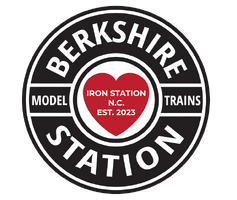Greatland Sugar Refining -- Kit
From the 1900s to the 1980s, the prototypes for facilities like the Walthers Cornerstone Greatland Sugar Refining could be found on railroads large and small. All through the day and night, a steady parade of gondolas, ancient hoppers, ore jennies, even a stock car or two rumbled into the yards. Seldom used branches and sidings groaned under the weight of cars piled high with sugar beets of another campaign (harvest). All across the line, extras rushed the crop to the refinery where the beets were processed into refined sugar. Sugar mills were among the most interesting - and busiest - of all the industries found alongside railroads. Running around the clock, seven days a week, the mill could process hundreds of tons of beets each hour. Getting beets from the fields to the factory was a huge job and just about any car that can be moved safely was pressed into service as the rush began. And the job wasn't over when the sugar was done, for most of it moved in bulk (along with various by-products) by rail to large commercial customers like bakeries and candy makers. The Greatland Sugar Refining kit makes it easy to model a complete operation in a small space. It includes the three-story processing plant, a boilerhouse with tall smokestack , a warehouse and a special track insert to simulate the beet dump where cars are unloaded. Highly detailed plastic parts, colorful sign decals and complete instructions allow you to quickly and easily create a busy industry for your steam- or diesel-era layout. Greatland Sugar Refining buildings as shown measure: Processing Plant: 9-1/8 x 6 x 7-1/2" 22.8 x 15 x 18.7cm Warehouse: 8-3/4 x 3-1/2 x 4-1/2" 21.8 x 8.7 x 11.2 Boilerhouse: 4-1/2 x 2-3/4 x 2-3/8" 11.2 x 6.8 x 5.9cm
Greatland Sugar Refining is just one of a wide variety of Cornerstone industrial buildings.
- Easy-to-build plastic kit
- Brick construction
- Three separate buildings
- Great for steam and classic diesel-era layouts
- Perfect for use with gondolas, hoppers, covered hoppers, boxcars and tank cars
- Realistic decal signs
- Molded in appropriate colors

